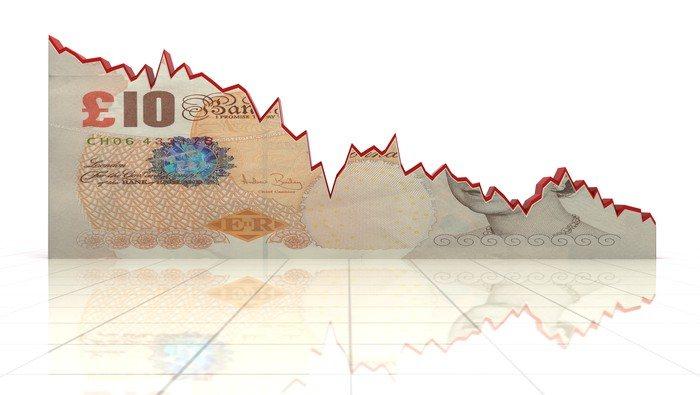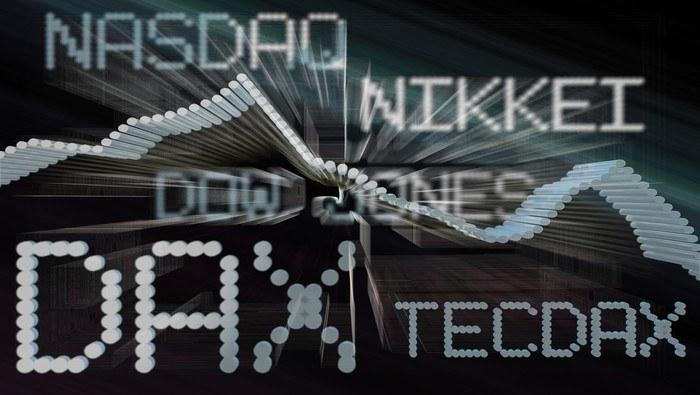2024-04-18 23:00
Want to stay ahead of the pound's next major move? Access our quarterly forecast for comprehensive insights. Request your complimentary guide now to stay informed on market trends! GBP/USD FORECAST - TECHNICAL ANALYSIS GBP/USD fell moderately on Thursday but remained above support at 1.2430. Bulls must vigorously defend this floor to prevent a deeper pullback; failure to do so may result in a retracement towards 1.2325. Subsequent losses beyond this point may lead to a retest of the October 2023 lows near 1.2040. On the flip side, if sentiment shifts back in favor of buyers and prices reverse to the upside off current levels, resistance looms at 1.2525. Above this critical barrier, the focus will transition to the 200-day simple moving average at 1.2570, followed by 1.2640, where the 50-day simple moving average aligns with two important short-term trendlines. GBP/USD PRICE ACTION CHART GBP/USD Chart Created Using TradingView EUR/GBP FORECAST - TECHNICAL ANALYSIS EUR/GBP rallied earlier in the week but reversed its course on Thursday after failing to clear trendline resistance at 0.8570, with prices dropping towards the 50-day simple moving average at 0.8550. The pair is likely to stabilize around current levels before mounting a comeback, but in the event of a breakdown, a dip towards 0.8520 and potentially 0.8500 could be around the corner. Alternatively, if bulls manage to reassert dominance and push the exchange rate higher, resistance emerges at 0.8570 as mentioned before. Breaking through this technical obstacle could set the stage for a surge toward the 200-day simple moving average near the 0.8600 handle. Disheartened by trading losses? Empower yourself and refine your strategy with our guide, "Traits of Successful Traders." Gain access to crucial tips to help you avoid common pitfalls and costly errors. EUR/GBP PRICE ACTION CHART EUR/GBP Char Creating Using TradingView GBP/JPY FORECAST – TECHNICAL ANALYSIS GBP/JPY was largely flat on Thursday, trading slightly below trendline resistance at 192.70. Bears need to protect this ceiling tooth and nail; any lapse could spark a move towards the 2024 highs at 193.55. On further strength, a jump towards the psychological 195.00 mark cannot be ruled out. On the other hand, if the pair gets rejected from its current position and pivots to the downside, support stretches from 190.60 to 190.15, where a rising trendline converges with the 50-day simple moving average and April’s swing lows. Additional losses below this floor could reinforce bearish impetus, opening the door for a drop towards 187.90. GBP/JPY PRICE ACTION CHART GBP/JPY Chart Created Using TradingView https://www.dailyfx.com/news/forex-british-pound-trade-setups-technical-analysis-gbp-usd-eur-gbp-gbp-jpy-20240418.html

2024-04-18 21:30
Stock market indices form the backbone of global investing, providing a way to track the performance of entire economies or sectors. Among the most heavily traded indices are the S&P 500 (US), Nasdaq 100 (US tech), FTSE 100 (UK), and DAX 40 (Germany). While their compositions differ, they offer exciting opportunities for traders of all levels. Understanding the Indices: A Quick Look Before you start trading, let's get a feel for what you'll be looking at: S&P 500: This giant represents the performance of the 500 largest publicly traded companies in the US. It offers broad exposure to the American economy, encompassing blue-chip stocks across various sectors. Nasdaq 100: This index is tech-heavy, concentrated on the 100 largest non-financial companies listed on the Nasdaq exchange. Think giants like Apple, Microsoft, and Amazon. FTSE 100: Comprised of the 100 largest companies on the London Stock Exchange, this index offers a snapshot of the UK's top businesses, with a tilt towards financials, energy, and consumer goods. DAX 40: This index serves as a benchmark for the German stock market, tracking 40 blue-chip companies known for their international exposure. Strategic Choices: How Will You Trade? Trading indices isn't limited to buying and selling the underlying asset. Here are the main ways you can get in on the action: CFDs (Contracts for Difference): These are popular derivatives that allow you to speculate on price movements without owning the actual index. CFDs offer flexibility, leverage, and the ability to go long (bet on rising prices) or short (bet on falling prices). Futures: These contracts obligate you to buy or sell an index at a set price and future date. Futures are often preferred by more experienced traders due to their standardized nature. Options: These grant you the right, but not the obligation, to buy or sell an index at a specific price (the strike price) before a certain date (the expiry). Options are a useful tool for hedging other positions or making complex speculative trades. Index ETFs (Exchange-Traded Funds): ETFs passively track an index, allowing you to essentially buy a 'basket' of stocks that mirror its composition. They're favored by long-term investors looking for broad market exposure. If you're looking for an in-depth analysis of U.S. equity indices, our second-quarter stock market trading forecast is packed with great fundamental and technical insights. Request it now! Popular Trading Strategies No single strategy fits everyone, so consider your risk appetite, knowledge, and time horizon before you settle on one: Trend Following: The classic principle of "the trend is your friend" applies to indices too. Look for established upward or downward trends, and aim to ride them with tools like moving averages and trendlines. Swing Trading: This targets shorter-term price swings over days or weeks. Swing traders rely on technical indicators to spot potential reversals and enter timely trades. News-based Trading: Indices react to major economic and geopolitical news. Stay updated on events like interest rate decisions, earnings reports, and political developments to anticipate potential market reactions. Day Trading: This lightning-fast style focuses on intraday movements, often with considerable leverage. Day traders heavily rely on technical analysis and real-time market data. Frustrated by trading setbacks? Take charge and elevate your strategy with our guide, "Traits of Successful Traders." Unlock essential strategies to steer clear of frequent pitfalls and costly missteps. Key Trading Tips: Things to Keep in Mind Understand Leverage: CFDs often involve leverage, magnifying both profits and losses. Use leverage cautiously, especially if you're a beginner. Mind the Risk: Trading indices can be volatile. Use stop-loss orders to limit downside risk and protect your capital. Don't Forget Fundamentals: While technical analysis is important, fundamentals drive markets in the long run. Stay informed about the overall health of the economy and sectors represented in the index you're trading. Keep Emotions in Check: Fear and greed can be your greatest enemies. Trade with a clear plan, and don't make impulsive decisions based on market swings. The Human Factor Trading is a journey of knowledge and self-mastery. Develop these essential qualities: Discipline: Stick to your trading plan, even when the market gets wild. Patience: Don't chase every move; wait for high-probability setups. Adaptability: Markets evolve; stay open to learning and re-evaluating your strategies. https://www.dailyfx.com/news/trading-the-giants-strategies-for-the-s-p-500-nasdaq-100-ftse-100-and-dax-40-20240418.html

2024-04-18 18:00
Geopolitical Tensions - How They Impact Oil Prices Supply Disruption One of the primary ways geopolitical tensions influence oil prices is through supply disruptions. When conflicts arise in oil-producing regions, such as the Middle East, production and transportation of oil can be hindered. For example, during the Gulf War in 1990-1991, oil prices spiked due to the disruption in Iraqi and Kuwaiti oil exports. Similarly, political instability in countries like Venezuela and Libya has led to decreased oil output, putting upward pressure on global oil prices, while the start of the Ukraine-Russia conflict sent oil prices spiraling higher. Learn How to Trade Oil with our Comprehensive Guide Market Speculation Another way geopolitical tensions affect oil prices is through market speculation. When there is a perceived risk of future supply disruptions due to political unrest or international conflicts, investors and traders may buy oil futures contracts, driving up prices. This speculative behavior can create a self-fulfilling prophecy, as rising prices lead to further concerns about supply, resulting in even higher prices. Moreover, geopolitical tensions can impact oil prices through changes in global demand. Economic sanctions imposed on oil-producing countries can limit their ability to sell oil on the international market, reducing global supply and putting upward pressure on prices. Conversely, when tensions ease and sanctions are lifted, the increase in oil supply can lead to lower prices. Navigating Volatile Markets: Strategies and Tools for Traders Inflation and Economic Growth The impact of geopolitical tensions on oil prices can have far-reaching effects on the global economy. Higher oil prices can lead to increased inflation, as transportation and production costs rise. This can slow economic growth, as consumers have less disposable income to spend on other goods and services. On the other hand, lower oil prices can provide a boost to the economy, as consumers benefit from lower energy costs and businesses experience reduced operating expenses. Energy Security Furthermore, the influence of geopolitical tensions on oil prices can have significant implications for energy security. Countries that heavily rely on imported oil are particularly vulnerable to supply disruptions and price fluctuations caused by geopolitical events. To mitigate these risks, many nations are seeking to diversify their energy sources and invest in renewable energy to reduce their dependence on oil. Geopolitical tensions play a crucial role in determining oil prices, with far-reaching consequences for the global economy and energy security. From supply disruptions and market speculation to changes in global demand, political instability, and international conflicts can cause significant fluctuations in oil prices. As the world continues to grapple with the challenges posed by geopolitical tensions, policymakers, businesses, and consumers need to remain informed about the potential impact on the oil market and the broader economy. https://www.dailyfx.com/news/the-impact-of-geopolitical-tensions-on-oil-prices-20240418.html

2024-04-18 17:00
Most Read: US Dollar Still on Bullish Path; Setups on EUR/USD, GBP/USD, USD/JPY, USD/CAD Trading often tempts us to follow the crowd – buying in a frenzy and selling in a wave of fear. Yet, seasoned traders recognize the possibilities that exist within contrarian approaches. Indicators like IG client sentiment provide a unique perspective on the market's collective mindset, potentially pinpointing moments where extreme optimism or pessimism could signal an imminent shift in direction. Naturally, contrarian signals aren't a guaranteed path to success. They offer the greatest value when used in conjunction with a robust trading strategy. By thoughtfully combining contrarian insights with technical and fundamental analysis, traders develop a more nuanced understanding of the forces shaping the market – dynamics that the masses might easily miss. Let's illustrate this concept by examining IG client sentiment and how it might influence gold, silver, and oil prices in the near term. Eager to gain insights into gold's future path? Discover the answers in our complimentary quarterly trading guide. Request a copy now! GOLD FORECAST – MARKET SENTIMENT IG data reveals a slightly bearish stance towards gold, with 51.59% of clients holding net-short positions. This translates to a short-to-long ratio of 1.07 to 1. Interestingly, this bearishness has increased since yesterday (2.21% rise in shorts) while staying relatively flat compared to last week. Our trading philosophy often leans towards a contrarian perspective. This modest net-short positioning suggests a potential for further upside in gold prices. The recent increase in net-short positions strengthens this bullish contrarian outlook. Important Note: While contrarian signals offer a unique perspective, they are best used in combination with a broader technical and fundamental analysis for a comprehensive understanding of gold's trajectory. SILVER FORECAST – MARKET SENTIENT IG data reveals a strong bullish bias towards silver, with 73.88% of traders currently net-long. This translates to a long-to-short ratio of 2.83 to 1. However, this bullishness has eased slightly since yesterday (down 1.47%) while showing a minor increase compared to last week (up 0.07%). We often incorporate a contrarian perspective in our trading. While the prevalent bullish sentiment could signal a potential pullback in silver, the recent shift towards less bullish positioning introduces some uncertainty. This creates a more neutral outlook from our contrarian standpoint. Key Reminder: Contrarian signals provide valuable insights, but for the most informed decisions, it's crucial to integrate them with a thorough technical and fundamental analysis of the silver market. CRUDE OIL FORECAST – MARKET SENTIMENT IG data spotlights a heavily bullish stance on WTI crude oil, with a substantial 71.04% of traders holding net-long positions. This results in a long-to-short ratio of 2.45 to 1. While this bullishness has eased slightly since yesterday (down 0.59%), it has surged compared to last week (up 23.94%). We often employ a contrarian perspective in our trading. This overwhelming bullish sentiment towards crude oil suggests a potential near-term price pullback. The continued increase in net-long positions strengthens this bearish contrarian outlook. Key Point: Remember, contrarian signals offer a valuable alternative viewpoint. However, for the most well-informed trading decisions, it's crucial to combine them with a broader technical and fundamental analysis of the oil market. https://www.dailyfx.com/news/market-sentiment-analysis-outlook-gold-silver-crude-oil-20240418.html

2024-04-18 14:39
Pound Sterling (GBP/USD, GBP/JPY) Analysis Sterling fundamentals muddy the water and BoE officials weigh in on inflation GBP/USD attempts to halt the decline, struggles with traction GBP/JPY consolidates just short of yearly high as JPY intervention speculation heats up Get your hands on the Pound Sterling Q2 outlook today for exclusive insights into key market catalysts that should be on every trader's radar: Sterling Fundamentals Muddy the Water and BoE Officials Weigh in on Inflation Recent UK fundamental data has been fairly mixed, but on balance, rate cuts are still on track for this year. The Bank of England (BoE) has forecasted that inflation will drop sharply in the first half of this year, reaching the 2% target by mid-year. UK CPI this week continued to show progress for both headline and core CPI measures despite missing consensus estimates. Earlier in the week average wage data proved stubborn and this is something the BoE is looking at closely, along with services inflation. The BoE has also been quick to point out that wage growth remains hotter in the UK than in the US and the EU when questioned about the timing of rate cuts. Stubborn wage growth and services sector inflation can support the pound at it implies interest rates need to remain higher for longer to see these pockets of inflation head lower. Yesterday, BoE Governor Andrew Bailey admitted there has been some loosening in the labour market and expects next month’s inflation number to reveal a strong drop. In addition, Monetary Policy Committee (MPC) member Megan Greene commented on progress made regarding inflation and that the ‘last mile’ will be difficult. Broader disinflation and a weaker labour market are scenarios that could weigh on sterling. All of these contrasting fundamental inputs aren’t helping the pound, especially at a time when the US dollar remains strong. GBP/USD Attempts to Halt the Decline, Struggles with Traction Cable has dropped massively since that hot US CPI print but has consolidated below the 1.2500 psychological level. Again today, price action attempted to tag the 1.2500 level but subsequently pulled away. The US Dollar Basket (DXY) revealed a lower move yesterday and is slightly higher today – keeping the pound at arms length. Failing to break above 1.2500 keeps the bearish bias alive, with a further sell-off eying a move towards 1.2200 which is a significant distance away from current levels. A close and hold above 1.2500 opens up the possibility of a deeper pullback towards the 200-day simple moving average. For now, the high-flying USD is likely to weigh on the weaker sterling. GBP/USD Daily Chart Source: TradingView, prepared by Richard Snow GBP/JPY Consolidates Just Short of the Yearly High as JPY Intervention Speculation Heats up GBP/JPY has consolidated just short of the yearly high of 193.50 as yen FX intervention speculation shifted up a gear. Trilateral talks between US, Japanese and South Korean finance heads underscore the seriousness with which Japan is considering actions to strengthen the yen. As can be expected, markets appear nervous to push higher in the event Japanese authorities do act. Despite USD/JPY being the problematic currency pair, sterling is likely to feel some knock-on effects too. 193.50 remains the ceiling, while 191.30 provides the immediate level of support, followed by the dynamic support provided by the 50 SMA GBP/JPY Daily Chart Source: TradingView, prepared by Richard Snow Stay up to date with the latest breaking news and themes driving the market by signing up to the DailyFX weekly newsletter: https://www.dailyfx.com/news/pound-sterling-latest-boe-inflation-nod-hampers-gbp-recovery-20240418.html

2024-04-18 13:00
Crude Oil Prices, Charts, and Analysis US crude prices have fallen once again Worries that US interest rates could stay high into this year’s second half are weighing The remained of this week offers few trading cues Crude Oil prices were lower again on Thursday with the market for the moment more focused on likely end demand in a world where interest rates don’t fall as quickly as many hoped at the start of the year. United States Federal Reserve Chairman Jerome Powell this week cited a lack of inflation-fighting progress, triggering yet another push-back of the markets’ rate-cut expectations. Borrowing costs are now expected to stay at current levels at least until July. When 2024 got underway, they were tipped to have started falling in March. The prospect of higher-for-longer interest rates will keep economic activity depressed, and, thereby, stifle energy demand, or so the market believes. Indeed, JP Morgan reportedly said on Tuesday that oil demand has been running substantially below its forecasts since the start of April. Such gloom has overridden substantial geopolitical uncertainties stemming from conflict in Ukraine and the Middle East which might be expected to bolster prices. For now, the market appears to be discounting further escalation of military action between Israel and Iran even though the former has reserved the right to retaliate against recent drone and missile strikes. The US has also re-imposed oil sanctions on major producer Venezuela, making it broadly illegal for companies to deal with that country’s state-run oil company. This week’s sessions don’t offer much in the way of likely trading cues, but we will hear from several Fed officials and get a snapshot of US oil-rig activity from oil service major Baker Hughes. US Crude Oil Technical Analysis Chart Compiled Using TradingView The West Texas Intermediate benchmark has shed more than $5/barrel in the last five trading sessions having failed on two occasions this month to break through what looks like important resistance at the $87.63 retracement level. Wednesday’s sharp fall took prices back below a trendline from mid-June 2022, which now once again offers resistance, this time at $82.66. The market appears to be headed back to support at its 200-day moving average. That comes in at $79.75 and it will be instructive to see whether that survives, if tested. The market has been above that level since March 12. Should it give way, uptrend-channel support at $77.46 will probably come into play. Battered bulls’ immediate priority will be to retake psychological resistance at the $83 handle before any attempt to negate Wednesday’s sharp fall from $85.44 can be made. Worryingly for them, WTI’s Relative Strength Index does not suggest that the market is in any sense oversold at this point. IG’s own sentiment data finds traders quite bullish at current levels, but to such a great extent (72%) that a contrarian bearish play could well make sense. --By David Cottle for DailyFX https://www.dailyfx.com/news/crude-oil-prices-slip-again-as-higher-for-longer-rate-prospects-dent-supply-hopes-20240418.html
